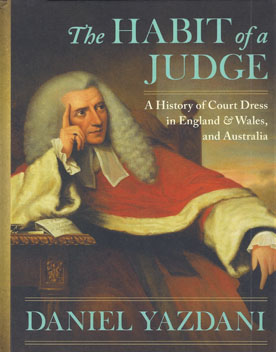
Until The Habit of a Judge, there has never been a book that offers a comprehensive history of Judges' robes and court attire in England and Wales, and its adoption in Australian courts since colonisation.
Richly illustrated with hundreds of colour images dating from the 12th century to the present, The Habit of a Judge invitingly portrays the fascinating world of judicial and legal dress.
This astonishing collection of images from rare sources presents the definitive history of court attire in common law countries. Accompanied by an erudite commentary, the spectacular colored plates are not only a delight to peruse, but also a unique reference that shows how fashion and symbolism have inspired respect for the judicial process. Thomas Lund, author, The Creation of the Common Law.
British cartoonists still portray judges sitting in court wearing full-bottomed wigs. In fact, those wigs are worn only on ceremonial occasions. And even the shorter `bench wig' worn with traditional robes has now largely been discarded in favor of a bareheaded look with a simple zippered black shift worn over jeans and T-shirt--or nothing at all. With the aid of over 300 illustrations, Daniel Yazdani painstakingly guides the reader through seven centuries of changing judicial and legal fashions. Dr. Michael Arnheim, St John's College.
Judicial costume, just as courthouse and courtroom architecture, symbolizes the foundations of a legal system, the position of a judge in the judicial hierarchy and vis-a-vis the general public. This volume superbly documents the English tradition of judicial costume and its impact in the antipodes, including jurisdictional variations at regional and local levels. Beautifully illustrated, thoroughly researched, this is a welcome addition to a slim literature on the subject and a significant contribution to comparative Anglo-American legal history. William E. Butler, Penn State University.